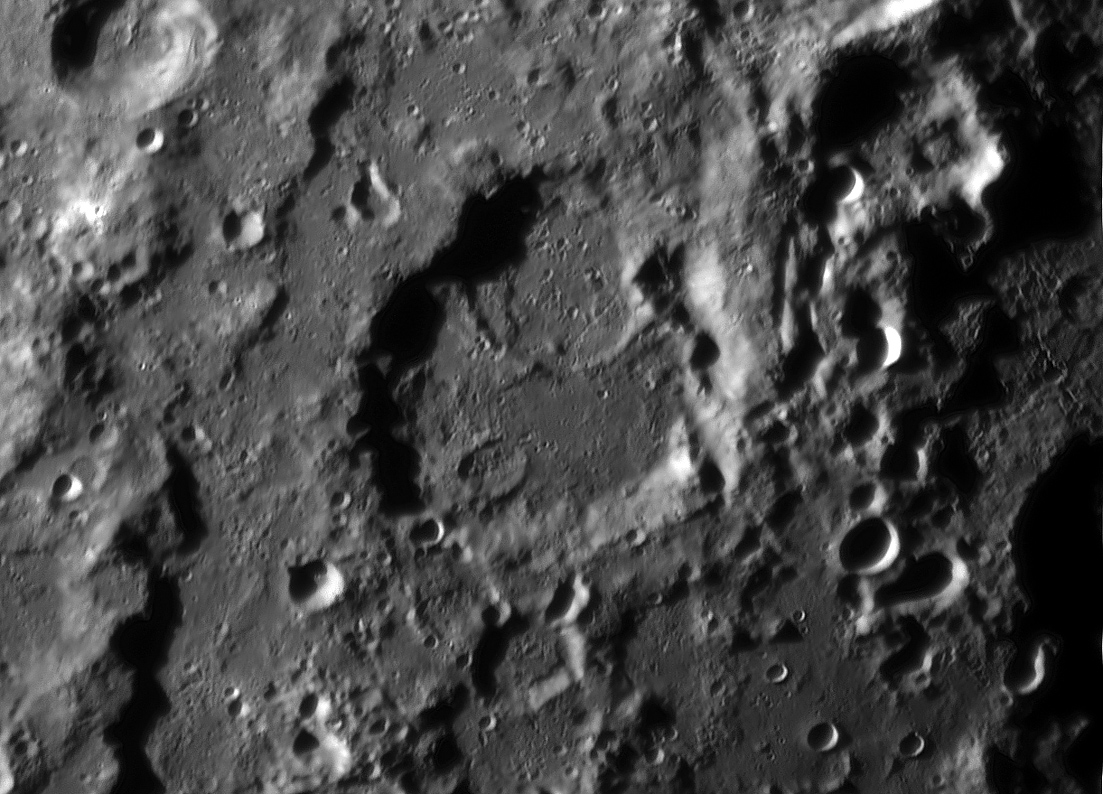
image by Wes Higgins
I will be sorry at the end of 2008 when the European, Japanese, Chinese, Indian and US lunar orbiters will have finished their missions and presumably the entire surface of the Moon will have been imaged at high resolution and everything larger than a few hundred meters will have been discovered. But in the meantime experienced amateur imagers keep revealing new features that I have never seen. The crater chain crisply crossing Catharina P is one I never knew of, but a quick check of the Lunar Orbiter IV image reveals that that hundred million dollar spacecraft also captured it, but less well. I think that this is the best image of the old battered Catharina crater that exists, period. Back to the crater chain - it points exactly toward the center of Theophilus, and must be secondaries from the impact that formed that large crater. Other lines of secondaries are visible at the far right-center of the image. These are not radial to Theophilus but are to Cyrillus. I am very surprised that such an old crater as Cyrillus would have preserved seondary crater chains - could they have some other origin? The title “Better than Orbiter” conveys my sense that the resolution of Wes’ image is very similar to the Lunar Orbiter image but the tonal contrast is much better. In fact, I think that after the upcoming flotilla of lunar orbiters crashes into our Moon, Wes, Mike, Damian, KC, Paolo, Jim and other lunar masters will continue to astound us with views that teach us things we never knew.
Technical Details:
July 15, 2006. 18″ Reflector, Infinity 2-1M camera, 15fps, MAP processing (225 alignment points), stack of 325 frames.
Related Links:
Rükl plate 57
Wes’ website
Yesterday's LPOD: A Mountain or a Molehill?
Tomorrow's LPOD: A Nearly New Rille
COMMENTS?
Register, Log in, and join in the comments.



